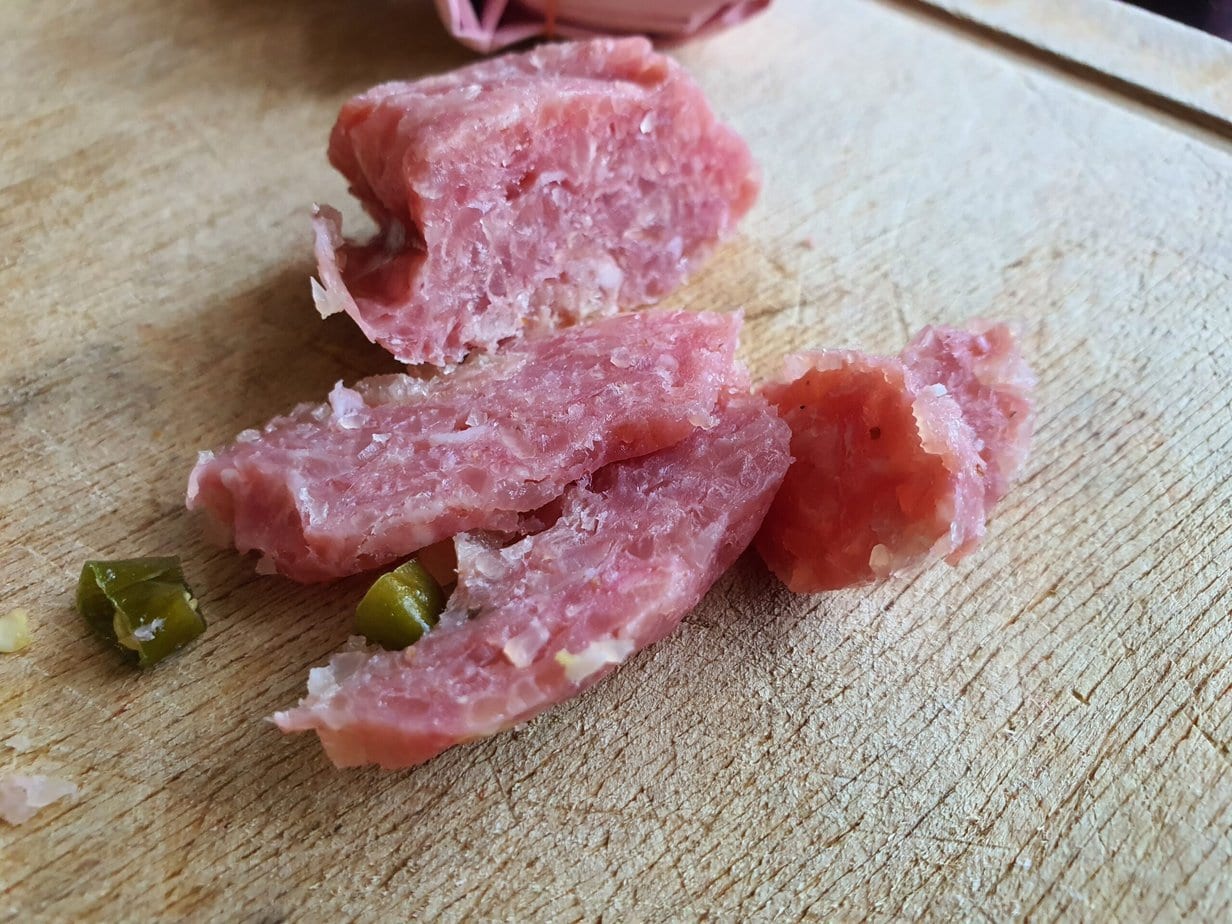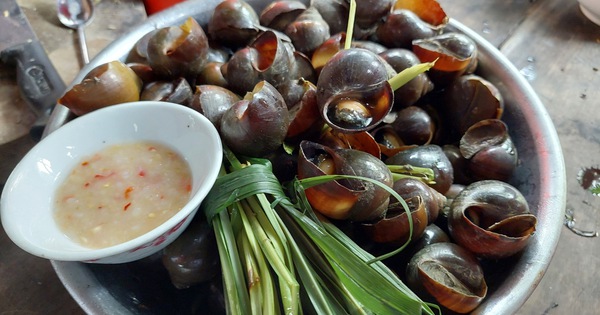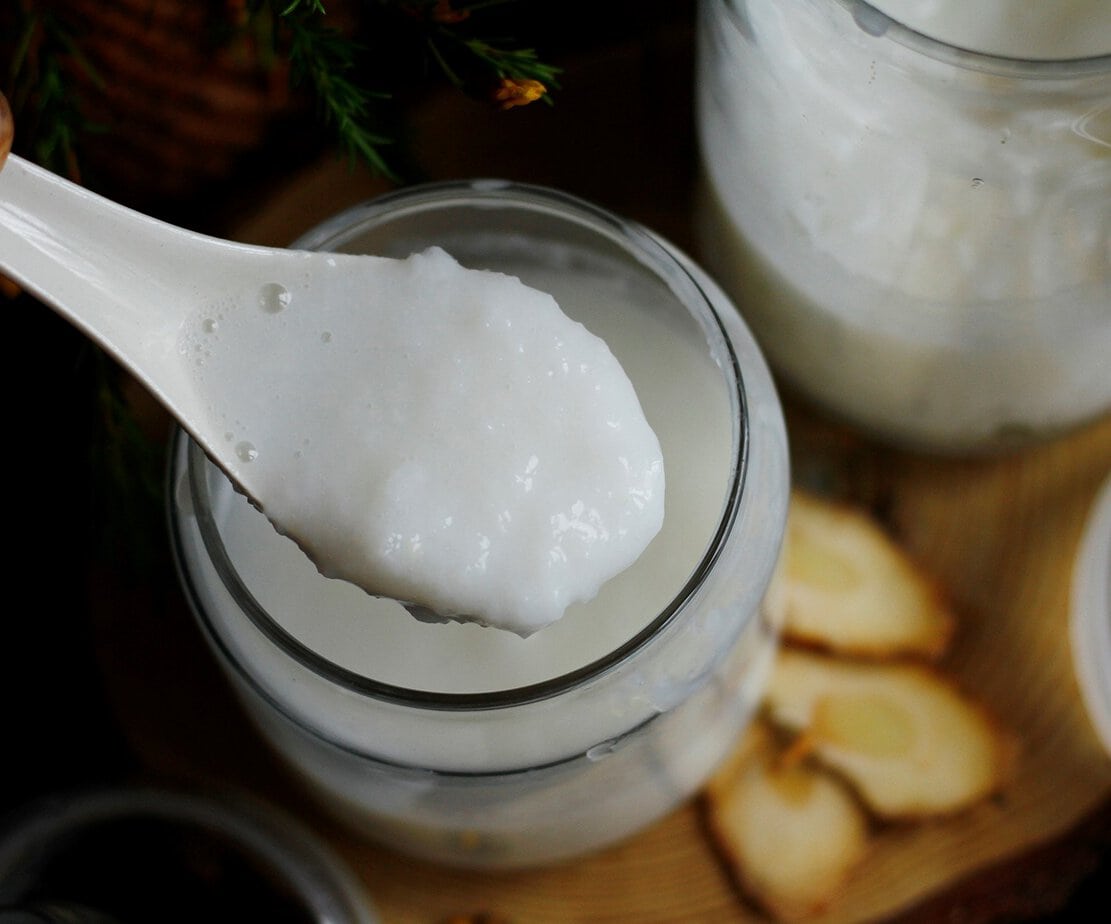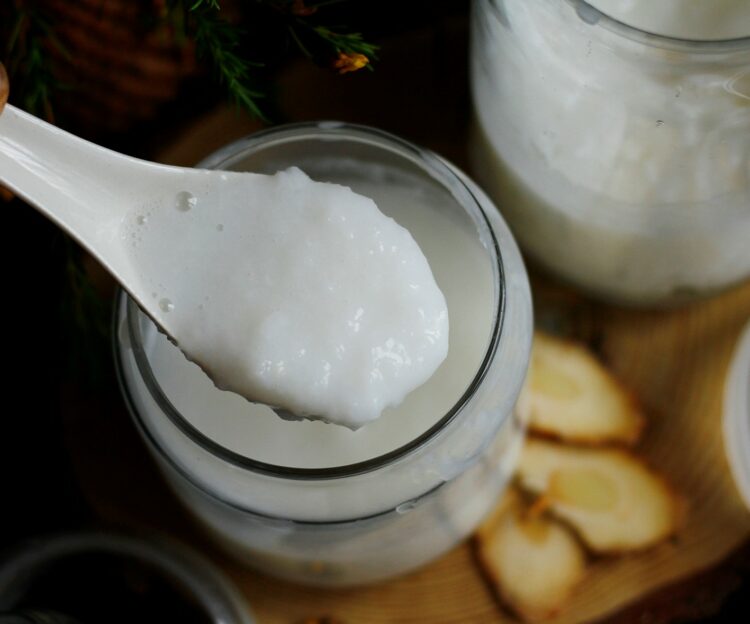Fermentation has long been used to preserve and enrich foods nutritionally, especially rice across Asia. In Asian cooking, fermenting rice has given rise to many delicious dishes.
For example: koji in Japanese cuisine; jiuniang or cơm rượu in Chinese cuisine and Vietnamese cuisine; tapai in Indonesian cuisine; and even rice vinegar. In Vietnam, there is also a lesser-known but very tasty fermented rice preparation: mẻ.
This condiment—and the recipe (if you dare!)—is so little known that there’s virtually no information about it in French. I found a short thread on an English-language forum, and that was it… Thanks to a new member of our team, Loan, who is Vietnamese, I learned it existed.
What is mẻ ?
Mẻ, cơm mẻ, or mẻ chua are names for a type of sour fermented rice in Vietnam. It’s a traditional condiment that’s very popular in northern Vietnam, where it originated, and in parts of the central and southern regions.
Mẻ is made via lactic fermentation of non-glutinous rice, which distinguishes it from other fermented rice preparations such as koji and jiuniang, products of alcoholic fermentation of glutinous rice.
During fermentation, yeasts, nematodes known as Panagrellus redivivus (con mẻ in Vietnamese), and lactic acid bacteria convert the rice’s sugars into lactic acid, producing mẻ’s distinctive tangy aroma and flavor. For a reference point, it’s somewhat reminiscent of nem chua

How to spot good-quality mẻ
In Vietnam, it’s identified by tiny nematodes (very, very small white worms, yet visible to the naked eye) swarming on the surface. Bon appétit.
Using mẻ in cooking
Mẻ seasons many Vietnamese dishes thanks to its distinctive sour flavor.
For soups such as crab, fish, or snail vermicelli soup (bún riêu), mix a few tablespoons of mẻ with a small bowl of cold water, then strain to obtain mẻ juice; add it to the soup.
You can also marinate certain meats and fish with mẻ to tame any strong odors. That’s the case with grilled fish (chả cá), a must-try Hanoi specialty.
Vietnamese cooks also mix mẻ with fish sauce and other seasonings to make nuoc cham for serving with Vietnamese spring rolls, for example.

How to store mẻ?
To store mẻ for an extended period, follow these three rules:
- Use ingredients free of contamination; sterilize everything properly.
- All utensils used to make, store, and handle mẻ must be clean. Sterilize and dry them before use.
- Feed the nematodes regularly: add a small bowl of rice to the jar once a week.
If stored properly, mẻ keeps for a few months. If you detect the slightest sign of spoilage, such as mold, discard it immediately.
Where can you buy mẻ?
Mẻ is hard to find outside Vietnam. However, in Europe, it’s sold in some grocery stores and shops specializing in Vietnamese products. The best-known brands are Ngọc Liên and Hương Sen.
Substitutes for mẻ
If you can’t find mẻ or don’t want to make it, use lemon, rice vinegar, tamarind, or plain yogurt to mimic the sourness. You won’t, however, capture its uniquely complex flavor.
Health benefits of mẻ
Like yogurt, mẻ is rich in lactic acid, vitamins, and protein that support digestive health. It can promote digestion, ease bloating, and stimulate the appetite.
It may also help combat harmful bacteria such as E. coli and Salmonella, helping protect the digestive tract.
How to make mẻ?
There are several ways to make mẻ. Here are two of the simplest. Exact quantities are still a work in progress; future testing will help refine them:

Equipment
Ingredients
Traditional Method
- non-glutinous rice
- water for cooking the rice
- water for rinsing the rice
- clean glass jar
Quick Method
- 1 bowl of overcooked non-glutinous rice
- 3 tablespoons lukewarm water
- 2.5 teaspoons unsweetened yogurt, at room temperature
- clean glass jar
Instructions
Traditional Method
- Rinse the rice before cooking.non-glutinous rice, water for rinsing the rice
- Cook the rice in a rice cooker with plenty of water until very soft and fully saturated.water for cooking the rice
- Boil the rice-rinsing water for about 10 minutes.
- Pour the boiled water into the glass jar.clean glass jar
- Let the rice and boiled water cool to room temperature.
- Add the rice to the jar, ensuring it is completely submerged.
- Close the jar (do not overtighten).
- Place the jar in a dry spot, away from light; it doesn’t need to be cool.
- Wait 7 to 10 days for the mẻ to be ready.
Quick Method
- Pour the lukewarm water over the overcooked rice.1 bowl of overcooked non-glutinous rice, 3 tablespoons lukewarm water
- Mix the rice with the yogurt.2.5 teaspoons unsweetened yogurt, at room temperature
- Transfer the mixture to a clean glass jar.clean glass jar
- Seal the jar tightly.
- Place the jar in a bowl of 80°C water and leave it there.
- Let ferment for 2 to 3 days, until the mẻ is ready. If you use an oven to maintain 80°C continuously, it will be ready in 9 hours.
Notes
It should taste pleasantly sour with a soft texture.
If the mẻ is watery or smells alcoholic, the batch has failed.

